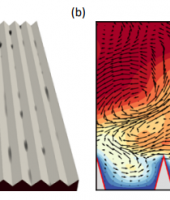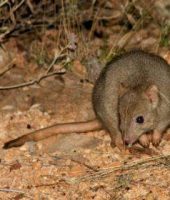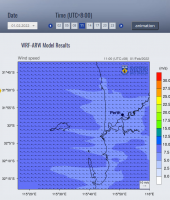Using genomics to assist conservation of Western Australia biodiversity
Our team uses genomics techniques to identify levels of genetic and taxonomic diversity in Western Australian flora and fauna to inform conservation decision making. This project will support bioinformatic analyses of genomic data for several sub-projects including investigating adaptive variation in plant species across climate gradients, investigating cryptic taxonomic diversity in plant genera, and phylogenomics and genetic diversity of a range of threatened mammal species in Western Australia for fauna restoration projects.
Area of science
Biological Sciences, Environmental Sciences, Geosciences
Systems used
Magnus
Applications used
Stacks, Mr Bayes, RAxML, exaBayes, Structure, BayPass, BEAST, snpeff, fastqc, faststructure, NOVOplasty, SOAPdenovo2, spades, velvet, bwa, samtools, R, gsnap, vcftools, megahit, nextflowThe Challenge
The research team are involved with multiple projects that work toward better management of species across Western Australia. The research will be used in clarifying species concepts, identifying management units, identifying sources of weeds, understanding adaptation and monitoring management activities.
The Solution
Many different types of analysis go into developing management strategies for species conservation or control. Genetic analysis can play an important role in identifying species, defining populations, understanding gene flow and elucidating patterns of adaptation. Pawsey resources are used in many aspects of genetic analysis from initial SNP calling and filtering, outlier identification to Bayesian and Maximum Likelihood phylogenetic inference
The Outcome
Results from these projects will be used to inform conservation-planning in the State, for example, species delimitation to support conservation listing of rare and threatened species and to support planning of translocation for fauna restoration projects, and identification of the source of invasive species to target management strategies. Our research is used to inform conservation-planning for WA flora and fauna.

Reduced representation GBS methods were used to investigate the genetic structure of Bettongia lesueur (burrowing bettong) populations. SNP calling and filtering were undertaken using the BWA, Stacks and Samtools applications on Zeus. We identified significant genetic structure amongst remaining burrowing bettong populations that will be used to inform conservation management of this threatened species.
List of Publications
Gosper, C., Hopley, T., Byrne, M., Hopper, S., Prober, S., & Yates, C. (2019). Phylogenomics shows lignotuber state is taxonomically informative in closely related eucalypts Research. Molecular Phylogenetics and Evolution, 135(March), 236–248. https://doi.org/10.1016/j.ympev.2019.03.016
Hopley, Byrne, Hopley Tara, & Byrne Margaret. (2019). Gene Flow and Genetic Variation Explain Signatures of Selection across a Climate Gradient in Two Riparian Species. Genes, 10(8), 579. https://doi.org/10.3390/genes10080579
Rick, K., Ottewell, K., Lohr, C., Thavornkanlapachai, R., Byrne, M., & Kennington, W. J. (2019). Population genomics of Bettongia lesueur: Admixing increases genetic diversity with no evidence of outbreeding depression. Genes, 10(11). https://doi.org/10.3390/genes10110851







